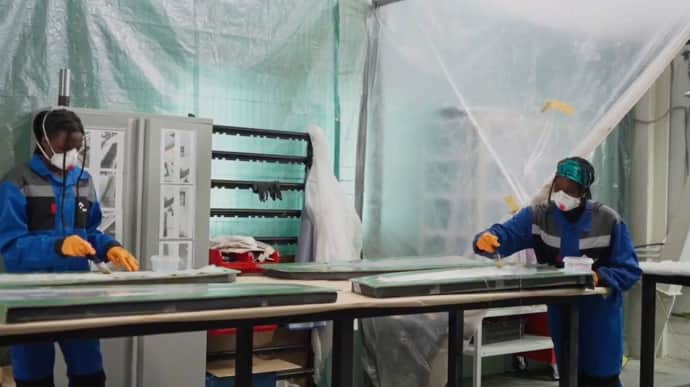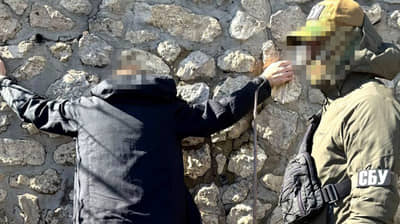Russian plant in Tatarstan supposed to produce 6,000 Shahed attack drones per year, but is already ahead of schedule – WSJ

The Wall Street Journal has reported that the plant in Russia's Alabuga special economic zone in Tatarstan, which was attacked by Ukrainian drones in early April, is supposed to produce 6,000 Shahed attack drones annually; as of the end of April, it was ahead of schedule and had already delivered 4,500 UAVs to Russia.
Source: WSJ
Details: The Wall Street Journal wrote that Russian businessmen had signed a deal to build a drone manufacturing plant at the end of 2022 when they flew to Tehran with an offer: US$1.7 billion, part of which was to be paid in gold bullion.
Information about these unusual conditions was made public in February by a hacker group called Prana Network, which claimed to have hacked into email servers linked to Iran's Islamic Revolutionary Guard Corps.
Quote from the WSJ: "The plan is for the Alabuga facility to churn out 6,000 Shahed attack drones a year, in addition to surveillance drones, according to a contract between the plant’s Russian managers and their Iranian partners leaked by the Prana Network and that was independently corroborated by two advisers to the British government.
At the end of April, the factory was ahead of its production schedule, having already supplied 4,500 of the promised Shaheds, according to the International Institute for Strategic Studies, a London-based defence-focused think tank."
Details: Ukrainian military intelligence and a former Syrian officer from the Etana conflict monitoring group stressed that Russian soldiers were already being trained to fly drones in Syria, along with instructors from the Revolutionary Guard Corps and the Iranian-backed militant group Hezbollah.
"Dozens of the M3 ‘Albatross’ reconnaissance drones made at the Alabuga plant have obtained detailed photographic intelligence on Ukrainian positions and movements on the front line. Their manufacturer said the drones had already helped repel an attempted incursion by Ukraine on Russia’s border region of Belgorod," they wrote.
It is reported that Russia is also producing its own warheads instead of waiting for Iranian-made warheads. This, in turn, accelerates the production of combat-ready weapons. Henry Thompson, a drone expert who used to work for the United Nations, said that the latest versions of the Shahed drones were manufactured in Russia. He came to this conclusion after analysing the wreckage found in Ukraine.
The WSJ noted that Moscow's transition to drones was due to the use of Tehran's shadowy logistics networks in addition to Iranian military technology.
However, to expand drone production, Russia needed skilled workers to assemble them.
"Initial production runs of the Albatross reconnaissance devices had largely relied on students from nearby technical colleges, but there weren’t enough of them to meet Moscow’s ambitions. The manufacturers began looking farther afield—to Africa.
Early last year, Russian businessmen from the Alabuga Special Economic Zone rented a hall at an upscale school in Kampala, the capital of Uganda, and gathered an audience of young female students to hear their pitch, according to Alabuga’s footage of the event and people who attended. The offer included a skilled job paying three times the wage at home in Uganda, with an airfare, free accommodation and a university diploma to join the work-study programme," the WSJ stressed, citing a video of the event made by Alabuga and testimonies of people present at the event.
Ugandan officials said that more than 1,000 women from all over Africa had travelled to the Alabuga free zone since then, and this year, another 1,000 students are likely to join them.
Quote: "Promotional videos posted by the Alabuga free zone show students roaming the corridors on skateboards to the sound of techno. The salary is nearly US$1,000 a month, almost double the average Russian wage.
Other footage published by the free zone showed an African woman at the site, dressed in a hazmat suit and face mask to avoid contaminating the delicate components, as she glued two wings onto an engine-equipped body for one of the Albatross reconnaissance drones. Officials in Kampala confirmed that the recruits sent to Alabuga are used to assemble unmanned aerial vehicles."
Background:
On 2 April, the authorities of the Russian Federation's Republic of Tatarstan reported a drone attack on companies in Yelabuga and Nizhnekamsk, which resulted in an explosion and casualties; it was reported earlier that Shahed attack drones were being assembled in Yelabuga. Intelligence sources said that the attack was carried out by Ukraine’s Defence Intelligence, which used large aircraft-type drones.
Support UP or become our patron!






